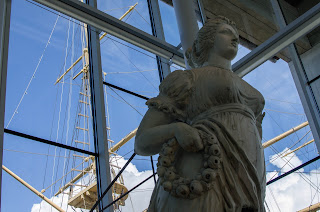 |
| Jonas Kaufmann in the title role. |
Almost all recent Salzburg Festival opera productions have been "modernized" versions, mainly enjoyable as radio broadcasts. When somebody - in this case the legendary director Peter Stein - dares to make a traditional staging, some of the critics cannot stand it:
The Salzburg Festival’s new Don Carlo staging is an object lesson in sumptuous emptiness. Throwing everything that money can buy at a production is no guarantee of excellence. Peter Stein, who has been sinking ever further into his own conservatism in recent years, has outdone himself in cringe-inducing dullness with this production. So diligently does he strive for authenticity that you can almost smell the mothballs; it is a wonder the whole thing does not crumble at the touch.
The costumes are historical, the poses are borrowed from period stage sketches, the detail is extravagant. Ferdinand Wögerbauer’s sets look alarmingly like something dug from the bottom of a cornflakes packet, and the little things that go wrong are almost legion enough to supply the missing entertainment value.
Fortunately, the audience - and quite a few other reviewers - disagreed. On the television screen (as broadcast by ARTE last night) Stein's production was hugely enjoyable. It was a vocally and visually stunning evening of great Verdi music. Thank you Peter Stein, Ferdinand Wögerbauer (sets) for daring to challenge the "modernizers"!
The star-studded cast, with Jonas Kaufmann in the titel role, Anja Harteros as Elisabetta, Thomas Hampson as Rodrigo and Matti Salminen (still in fine voice at 68!) as Filippo, of course, also should be thanked. And the Vienna Philharmonic under Antonio Pappano, as well as the fine chorus, should not be forgotten either.
























































